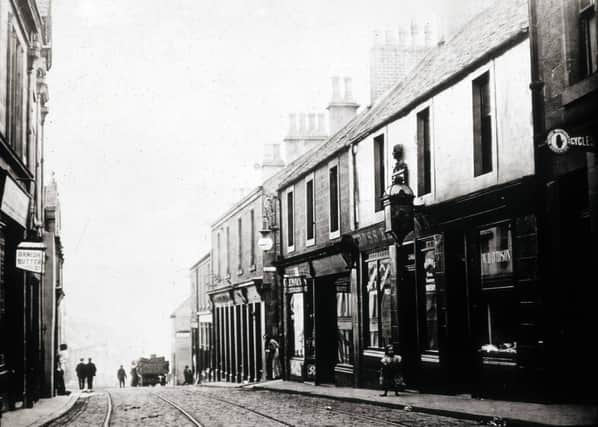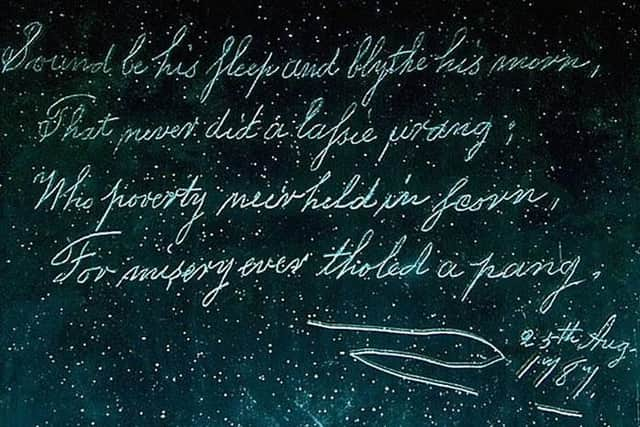Looking Back with Ian Scott: Celebrating Robert Burns' Falkirk visits and verses


The little that we do have however, we like to remember and celebrate.
It is just over 235 years since that Saturday afternoon in August 1787 when the great man along with his friend Willie Nicol arrived in the town having popped into “that dirty ugly place” Bo’ness on his way from Edinburgh. They were at the start of their Highland tour and our town was his first overnight stop.
Advertisement
Hide AdAdvertisement
Hide AdThe Red Lion, Falkirk’s principal coaching inn, was packed with folk in town for the cattle tryst so they had to settle for the Cross Keys across the road. “Falkirk,” said the Bard in his Journal, was “nothing remarkable except the tomb of Sir John de Graeme” which he visited the next day. Later in a letter to a friend he wrote: “Today I knelt at the tomb of Sir John the Graeme, gallant friend of the immortal Wallace”.


The Cross Keys was until recently the home of Revolution Music (Rabbie would have loved that!) and the refurbished plaque marking the visit is still there. It was paid for by William Mitchell of Grahamston Foundry back in 1889.
Another relic of the visit is a window pane now in the Museum at Alloway said to be from the Cross Keys with a verse enscribed on the glass with the diamond tipped pen the poet had been given by his admirers in Edinburgh – “Sound be his sleep and blythe his morn, that never did a lassie wrang” it says, which probably suggests that he neither slept soundly nor got up blithely! Is it authentic? There’s not much evidence other than a suggestion that the glass found its way abroad before being purchased by the museum.
After visiting the Kirkyard they headed west, crossing the “Grand Canal” into Camelon, which he called “the ancient Metropolis of the Picts”, before an unhappy trip to Carron Works where they famously failed to gain admission. I have written about that occasion before so will pass it by this time. They left Carron for Dunipace but took time to visit Larbert Churchyard to see the cast iron monument erected by James Bruce, the Abyssinian traveller, for his wife Mary Dundas. Bruce was far more famous than Burns at the time but Rabbie implied in his Journal that he had treated Mary very badly and that the grand monument was to settle his guilty conscience.
Advertisement
Hide AdAdvertisement
Hide AdNot long after Burns’ untimely death in 1796 his friends began to gather each year to mark his birthday. The earliest surviving record of a ‘Burns Supper’ in Falkirk is from 1820 and the 100th anniversary of the poet’s birth in 1859 brought a flurry of commemorations including the ‘Falkirk Working Men’s Burns Festival’. The current Falkirk Burns Club followed in 1866.
And so it has continued down the decades with hundreds of suppers taking place in every corner of the district. Over the years our area has enjoyed the contributions of many fine speakers like Willie Muirhead, Tom Walker, Harry Ewing, Tom Barrie and Tom Myles who was born in the Cross Keys in the very room where Burns passed the night in 1787. They have helped keep the memory of Robert Burns alive so that the next generation will carry on the tradition that makes January a special month for all Scots.
Comment Guidelines
National World encourages reader discussion on our stories. User feedback, insights and back-and-forth exchanges add a rich layer of context to reporting. Please review our Community Guidelines before commenting.